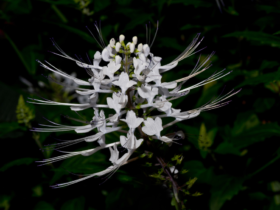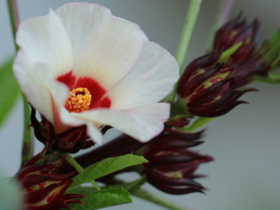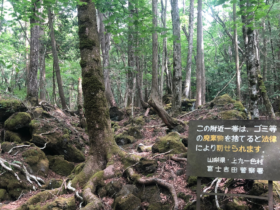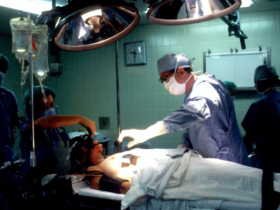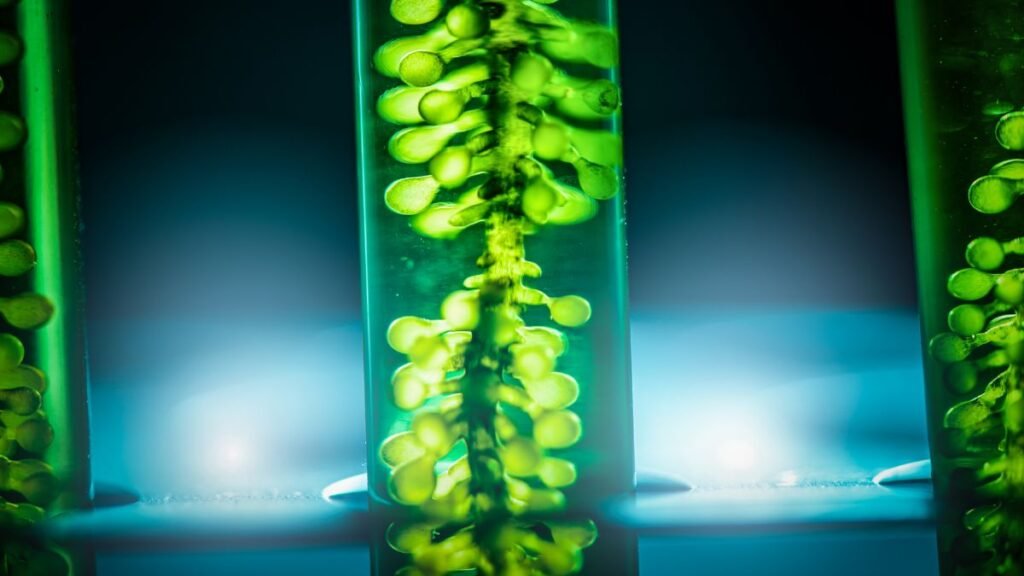
In the modern urban landscape, where concrete often overshadows greenery, the concept of the “liquid tree” emerges as a beacon of innovation. Developed by Serbian scientists, this pioneering technology not only addresses the pressing issue of urban air pollution but also reimagines the future of sustainable city living.
Understanding Urban Pollution and Its Impacts
Cities worldwide grapple with the challenge of maintaining air quality amidst growing industrialization and urbanization. Pollutants from vehicles, industries, and other sources contribute significantly to health issues, affecting millions globally. In this context, the need for effective and sustainable urban environmental solutions has never been more critical.
The Genesis of the Liquid Tree
In response to these challenges, Dr. Ivan Spasojevic and his team at the University of Belgrade conceptualized the Liquid Tree, also known as LIQUID 3. This urban photo-bioreactor is not just a scientific achievement but a symbol of hope in the battle against air pollution.
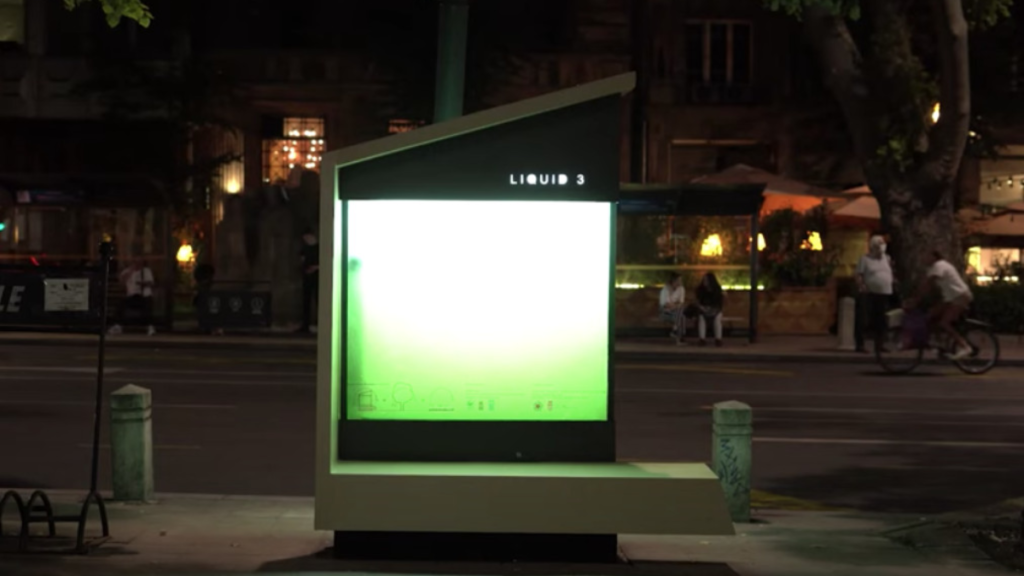
Mechanism and Efficiency
At its core, the Liquid Tree harnesses the power of microalgae to purify air. These microalgae perform photosynthesis more efficiently than trees, absorbing carbon dioxide and releasing oxygen at a significantly higher rate. This makes the Liquid Tree an ideal solution for urban areas where space constraints limit traditional tree planting.
Design Excellence and Multi-Functionality
Beyond its primary function of air purification, the Liquid Tree is an epitome of multi-functional urban design. It serves as a sitting area, includes mobile phone charging stations, and is illuminated at night by solar-powered lights. This integration of multiple functions highlights a shift towards more holistic urban planning and design.
Strategic Urban Placement for Maximum Impact
The Liquid Tree’s placement in Belgrade’s Stari Grad municipality is strategic, targeting areas with the highest pollution levels. This placement underscores the importance of targeted environmental interventions in urban planning.
Maintenance, Sustainability, and Ecological Benefits
Ease of Maintenance and Robustness
The Liquid Tree stands out not just for its innovative approach to air purification but also for its ease of maintenance, sustainability, and the range of ecological benefits it provides. Central to its appeal is the low-maintenance nature of the microalgae used. These algae are robust, capable of thriving in a variety of urban environments and weather conditions, and require minimal care. This makes the Liquid Tree a practical solution for busy urban settings where resources for regular maintenance might be scarce.
Sustainable Operation and Environmental Footprint
In terms of sustainability, the Liquid Tree is a model of ecological responsibility. The system operates on a closed-loop principle, where the only inputs are sunlight, carbon dioxide, and water, making it an exceptionally eco-friendly option. The energy required for the functioning of the Liquid Tree, such as for the lighting and phone charging stations, is sourced from solar panels, further reducing its environmental footprint.
Biomass Utilization and Circular Economy
Moreover, the ecological benefits of the Liquid Tree extend beyond air purification. The biomass produced by the algae, a by-product of the photosynthesis process, has practical applications. This biomass can be harvested and used as a high-quality fertilizer, contributing to urban agriculture and green spaces. This not only adds value to the system but also helps in creating a circular economy, where waste is minimized, and resources are reused efficiently.
Biodiversity Enhancement and Educational Value
Another significant ecological advantage of the Liquid Tree is its contribution to biodiversity. By introducing a new micro-ecosystem into urban areas, it can support a range of microorganisms, offering a small but meaningful boost to urban biodiversity. Additionally, the presence of the Liquid Tree in urban areas serves as an educational tool, raising public awareness about the importance of sustainable practices and the role of innovative technologies in environmental conservation.
Catalyst for Urban Renewal and Green Innovation
Furthermore, the sustainability of the Liquid Tree goes beyond its immediate environmental impact. By acting as a catalyst for urban renewal and green innovation, it encourages city planners, businesses, and communities to think more creatively about urban design and sustainability. This has the potential to inspire more comprehensive green initiatives, contributing to a broader shift towards sustainable urban development.
Recognition and Awards
The innovation of the Liquid Tree has been recognized and awarded for its contribution to climate-smart urban development. Such recognition is crucial in promoting and inspiring similar initiatives globally.
The Role of the Liquid Tree in Climate-Smart Urban Development
The Liquid Tree is not just a standalone project; it embodies a broader movement towards smarter, more sustainable urban development. It represents a shift in thinking, where environmental solutions are integrated seamlessly into urban infrastructure, enhancing both the ecological and social fabric of cities.
Expanding the Scope: Beyond Air Purification
The potential applications of the Liquid Tree technology extend beyond air purification. The same principles can be applied to wastewater treatment, biomass production, and even biofuel generation, showcasing the versatility and far-reaching implications of this technology.
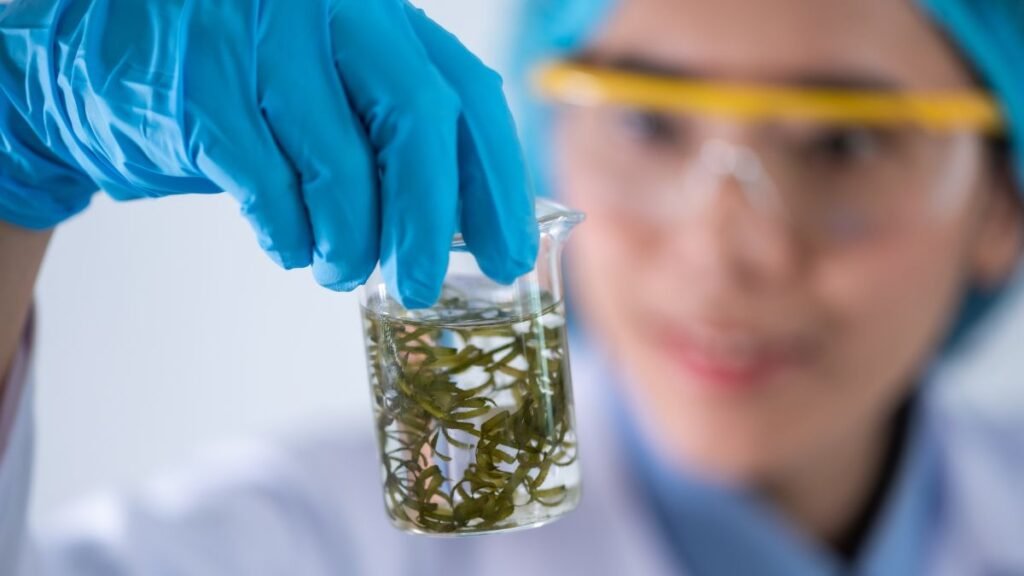
Challenges and Future Prospects
Overcoming Scalability and Customization Challenges
While the Liquid Tree represents a significant advancement in urban environmental technology, its journey from a novel concept to a widely adopted solution is not without challenges. One of the primary hurdles is scalability. The question of how to efficiently replicate and implement these photo-bioreactors in diverse urban settings worldwide remains. Each city has its unique environmental conditions, space constraints, and socio-economic dynamics, which necessitates a tailored approach to the deployment of Liquid Trees.
Ensuring Long-term Sustainability and Efficiency
Another aspect is the long-term sustainability and operational efficiency of the Liquid Tree. Ensuring that the system remains effective over time, with minimal ecological footprint and maintenance requirements, is crucial. This involves continuous research and development to improve the resilience and productivity of the microalgae, as well as advancements in the overall design and materials used in the construction of these bioreactors.
Integrating with Urban Infrastructure and Community
Moreover, the integration of Liquid Trees into the existing urban infrastructure poses a complex challenge. Urban planners and policymakers need to consider not only the environmental but also the social and economic impacts of introducing such technology. It requires a collaborative effort involving government agencies, environmental experts, urban designers, and local communities to create a conducive ecosystem for the adoption of Liquid Trees.
Expanding Applications and Technological Integration
Looking towards the future, the potential of the Liquid Tree technology extends beyond air purification. Its principles could be adapted for other applications, such as integrating algae-based systems in building facades for insulation and air filtration, using them in water treatment facilities, or even developing biofuel as a by-product of the algae’s photosynthesis process. These possibilities open up new avenues for research and innovation in urban sustainability.
Evolving with Emerging Technologies
The future of the Liquid Tree also lies in its ability to evolve with emerging technologies. Integration with smart city initiatives, such as IoT (Internet of Things) sensors for monitoring air quality and system health, could enhance its efficiency and impact. Additionally, advancements in biotechnology could lead to the development of more efficient strains of algae, further boosting the system’s environmental benefits.
Conclusion
The Liquid Tree stands as a testament to human ingenuity and our commitment to creating sustainable urban environments. It is a symbol of hope and a model for future urban environmental solutions. As we continue to navigate the complexities of urban pollution and climate change, the Liquid Tree offers a glimpse into a future where technology and nature coexist harmoniously, paving the way for healthier, more sustainable cities.
Also read about our post on Neural Interface Technology: The Future of Human-Computer Interaction




